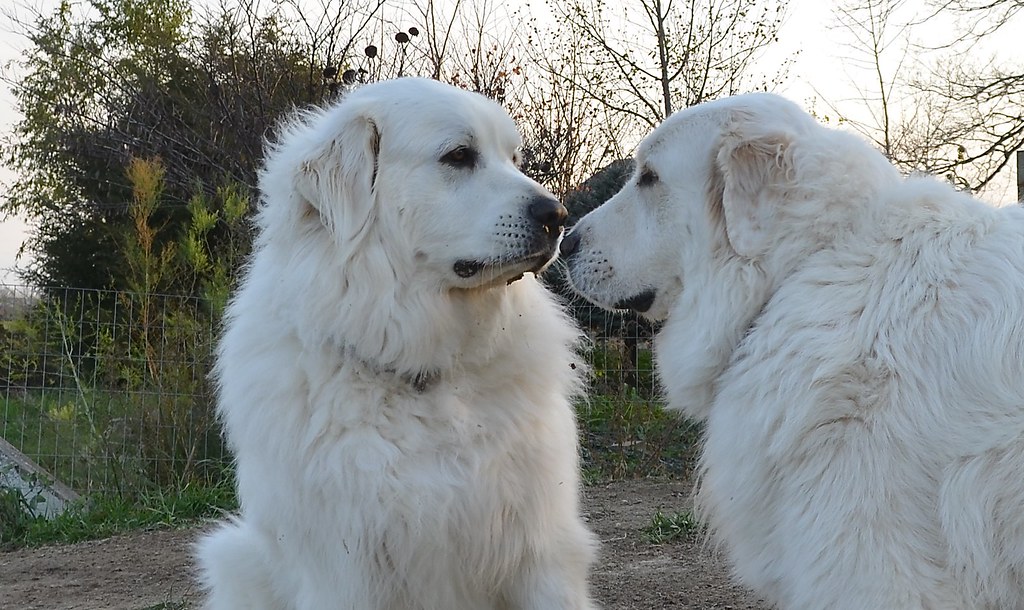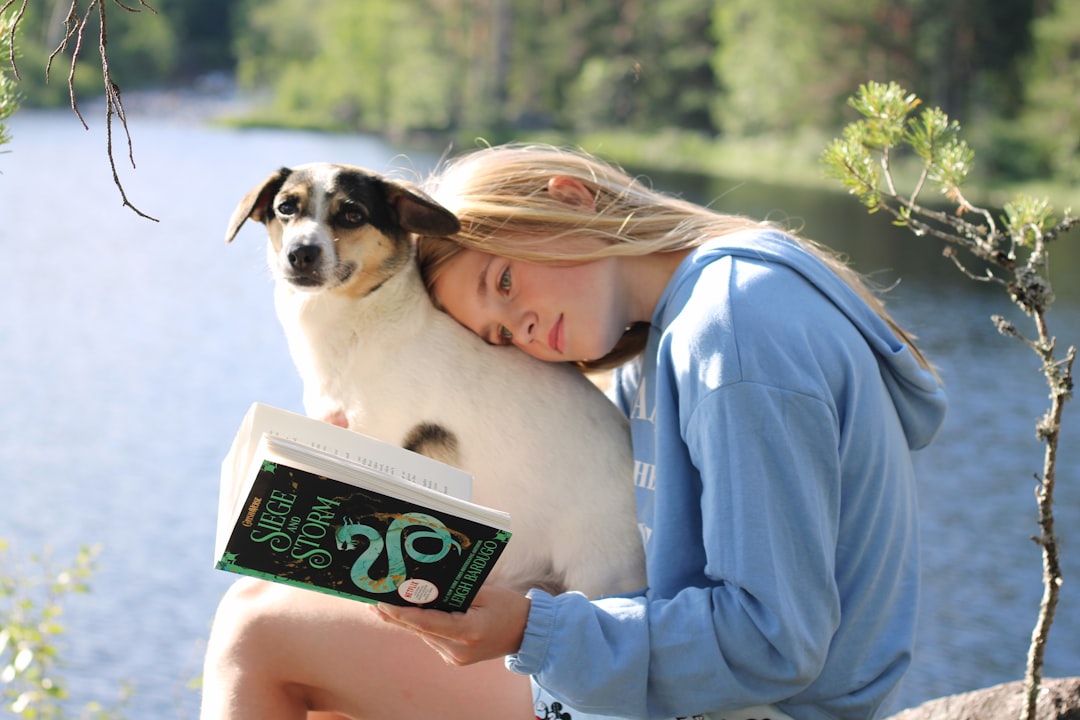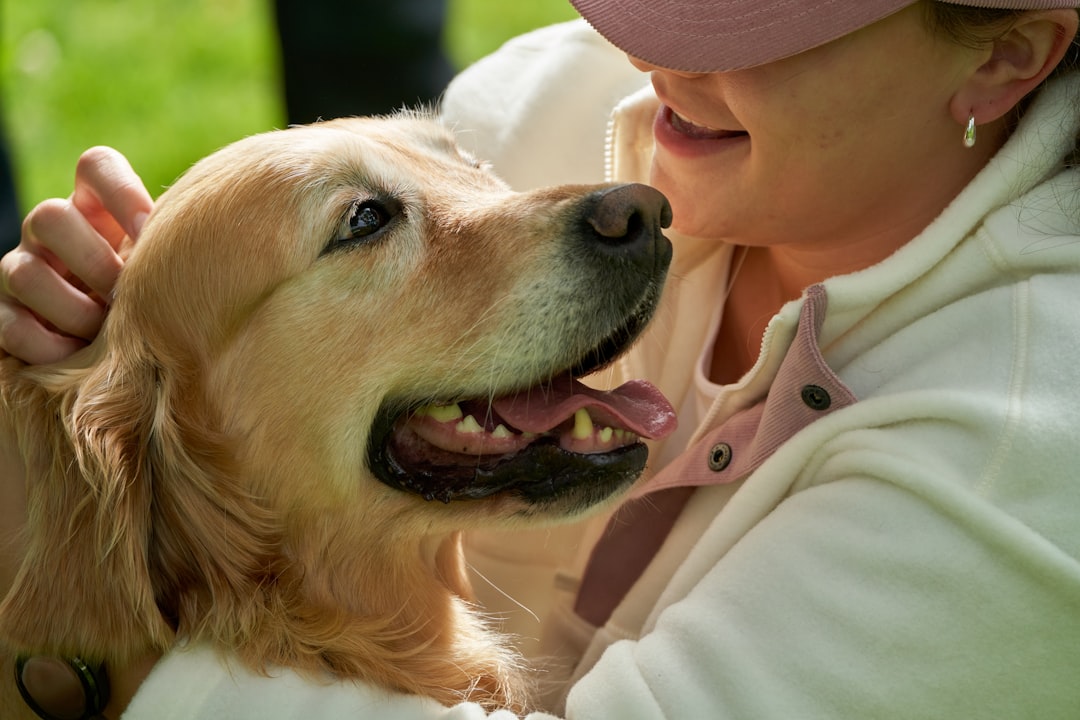You’ve probably experienced it countless times. You’re feeling stressed about work, and suddenly your dog appears at your side, gently pressing their warm body against your leg. Or perhaps you’re feeling sad, and your faithful companion quietly rests their head on your lap with those knowing eyes. It’s almost as if they possess some mystical sixth sense, reading your emotional state before you’ve even fully acknowledged it yourself.
The truth is, our dogs aren’t psychic, but they might as well be. Science is revealing that our canine companions possess remarkable abilities to detect, interpret, and respond to human emotions in ways that go far beyond simple observation. They’re reading us through multiple channels, from our body language to the invisible chemical signals we unknowingly release. Let’s explore the fascinating science behind how dogs sense our energy and what this means for the incredible bond we share.
Their Extraordinary Scent Detection Abilities

Dogs possess one of nature’s most sophisticated scent detection systems, far surpassing anything humans can comprehend. A dog’s nose contains up to 300 million olfactory receptors (compared to around six million in humans), making their sense of smell roughly 10,000 to 100,000 times more powerful than ours. This isn’t just about detecting food or other dogs in the neighborhood.
When we experience emotions like stress, anxiety, or fear, our bodies undergo significant physiological changes. Cortisol is the most abundant glucocorticoid released in response to a stressor, and is generally acknowledged as the ‘stress hormone’. However, cortisol levels peak approximately 10 to 30 minutes after an acute stressor, yet dogs seem to detect our emotional state immediately.
Using their super nose powers, dogs are able to sense rising cortisol levels in our sweat or breath, and react accordingly. Recent research has shown that even untrained dogs may be able to detect differences in cortisol via scent, suggesting this ability is natural rather than learned.
What’s truly remarkable is that the odors came from unfamiliar people, suggesting a common ‘stress’ smell among individuals that dogs can identify without prior training. Your dog isn’t just reading you, they can sense stress in any human they encounter.
Reading Facial Expressions and Body Language

Dogs can recognise emotions in humans by combining information from different senses – an ability that has never previously been observed outside of humans. This groundbreaking discovery reveals that dogs don’t just notice our emotions, they actively process and interpret them using multiple sources of information simultaneously.
The Finnish research team showed images of both dogs and humans to 31 dogs of 13 different breeds and found that the viewers looked first at the eye region and generally examined eyes longer than nose or mouth areas. If the photograph displayed a threatening dog, the viewing dog would then look at the screen animal’s mouth; if the picture displayed a threatening human, however, the viewing canine would avoid looking at the face altogether.
This behavior shows incredible sophistication. Dogs have learned that direct eye contact with a threatening human might escalate a situation, so they’ve adapted their response accordingly. Dogs are experts at reading body language, and they can pick up on even the subtlest of changes in our posture, facial expressions, and movements. For example, a furrowed brow or tensed muscles can signal to a dog that we are feeling anxious or upset.
Listening to the Emotional Tones in Our Voices

Your dog’s remarkable hearing abilities extend far beyond detecting the sound of a treat bag opening. Dogs can hear four times farther than humans and pick up frequencies from 40 to 60,000 Hz, enabling them to notice tones that reflect anxiety or anger. They’re not just hearing what you say, they’re analyzing how you say it.
Overall, it seems that dogs can determine human emotions using only their ears, at least for happiness, fear, and sadness – using the right side of their brain for processing negative emotions and the left side for positive ones. This brain lateralization is similar to what we see in humans, suggesting a deep evolutionary connection in how emotions are processed.
Results showed that dogs turned to the left for the fear and sadness vocalizations. This indicates the dogs were processing these particular sounds on the right side of their brain, and therefore interpreted them as negative. For happy sounds, the dogs turned to the right, showing that they interpreted them as positive.
Think about how your dog reacts when you use different tones of voice. That gentle, soothing voice you use when they’re scared versus the firm tone when they’ve done something wrong, your dog processes these vocal cues emotionally, not just as commands.
The Chemistry of Emotional Contagion

“Dog owners know how attuned their pets are to their emotions, but here we show that even the odour of a stressed, unfamiliar human affects a dog’s emotional state, perception of rewards, and ability to learn”. This research reveals something profound, dogs don’t just detect our stress, they actually absorb it.
In one testing session, when the dogs smelled the sample from a stressed volunteer, compared with the scent of a cloth without a sample, they were less likely to approach the bowl in one of the ambiguous locations, suggesting that they thought this bowl did not contain a treat. The results imply that when dogs are around stressed individuals, they’re more pessimistic about uncertain situations.
This phenomenon, known as emotional contagion, means our dogs literally feel what we feel. Dogs are also capable of experiencing emotional contagion, or “catching” their owner’s emotions. So, if you’re feeling anxious, your dog may also start to feel and show signs of anxiety, like restless pacing and whining. In many ways, your dog may be like a mirror to your emotional state.
How Dogs Mirror Our Energy Patterns

Dogs are our mirrors and what they reflect back is our energy, emotions, pain, personalities, etc. You will often see your dog with the same expression as you. Or, if you’re really excited, they start getting all giddy. This mirroring behavior goes beyond simple mimicry, it’s a sophisticated form of emotional synchronization.
Since the personality of the owners was significantly related to the HCC of their dogs, we suggest that it is the dogs that mirror the stress levels of their owners rather than the owners responding to the stress in their dogs. This research confirms what many dog owners have long suspected, our emotional state directly influences our dog’s wellbeing.
Golden Retrievers are so empathetic that they often mirror their owner’s emotions – be it happiness, excitement, or sadness – making them one of the most perfect companions for emotional support. However, this ability isn’t limited to specific breeds, all dogs possess varying degrees of this emotional mirroring capacity.
Pay attention to your dog’s behavior when you’re having different emotional experiences. You’ll likely notice they adjust their energy to match yours, becoming calm when you need peace or playful when you’re feeling joyful.
Therapeutic Applications and Service Dogs

The scientific understanding of how dogs sense human emotions has led to remarkable therapeutic applications. The use of dogs to support human psychological conditions such as anxiety, panic attacks and Post Traumatic Stress Disorder (PTSD) is growing in popularity, with waiting lists for PTSD service dogs being months-to-years long in some instances. Such dogs have been reported to improve an individual’s quality of life, social connections, and reduce the number of panic attacks or PTSD symptoms.
Psychiatric service dogs undergo extensive training to help their human companions. They must pass basic obedience training and learn to successfully perform their assigned therapeutic tasks consistently and reliably. Tasks that psychiatric service dogs can perform include waking people up from night terrors, reminding handlers to take their medication, and leading their handlers to a quiet space if they’re experiencing a panic attack.
Some dogs are even being trained for highly specialized detection work. Cali, a Rhodesian Ridgeback, is the first cortisol-sniffing dog employed by a school. She has been taught to notice students with high levels of cortisol in their bloodstream, and then further notify her handler when she senses this hormone kicking in. Her handler can then work with that child before a meltdown occurs.
Strengthening Your Emotional Bond

Understanding how your dog senses your energy opens up incredible possibilities for deepening your relationship. Maintain a calm demeanor: Dogs mirror your energy. Staying calm reassures them. This isn’t just about training, it’s about creating a positive feedback loop of emotional wellbeing for both of you.
She doesn’t respond to what the person says or does; she responds to what they feel. This insight from service dog work shows us that our dogs are constantly tuning into our authentic emotional state, not just our outward behavior. Being genuine with your emotions, rather than trying to hide them, can actually strengthen your bond.
So, the next time you’re feeling down or stressed out, pay attention to your dog’s behavior. They may start to reflect your mood or try to comfort you. Either way, your dog is often an excellent indicator of your emotional state of being, and paying attention to them can ultimately help you take better care of your emotional and mental health.
Consider your dog as an emotional barometer for your household. When they seem unusually anxious or restless, it might be worth examining the stress levels in your home environment and taking steps to create more calm, positive energy for everyone’s benefit.
Conclusion

The science behind reveals a relationship far more complex and beautiful than we ever imagined. Through their extraordinary sensory abilities, sophisticated brain processing, and deep emotional intelligence, our dogs have become our most attuned companions. They read our chemical signals, interpret our body language, listen to our vocal tones, and mirror our emotional states with a precision that rivals any human relationship.
This remarkable ability isn’t just fascinating from a scientific perspective, it’s profoundly meaningful for how we understand and nurture our bond with our canine companions. Every interaction becomes an opportunity for deeper connection when we recognize that our dogs are experiencing our world through such rich, multisensory channels.
Perhaps most importantly, this research reminds us that our emotional wellbeing directly impacts our dogs’ happiness and health. When we take care of ourselves emotionally, we’re also caring for them. What do you think about this incredible emotional partnership you share with your dog? Have you noticed how they respond to your different moods?

Andrew Alpin from India is the Brand Manager of Doggo digest. Andrew is an experienced content specialist and social media manager with a passion for writing. His forte includes health and wellness, Travel, Animals, and Nature. A nature nomad, Andrew is obsessed with mountains and loves high-altitude trekking. He has been on several Himalayan treks in India including the Everest Base Camp in Nepal.






